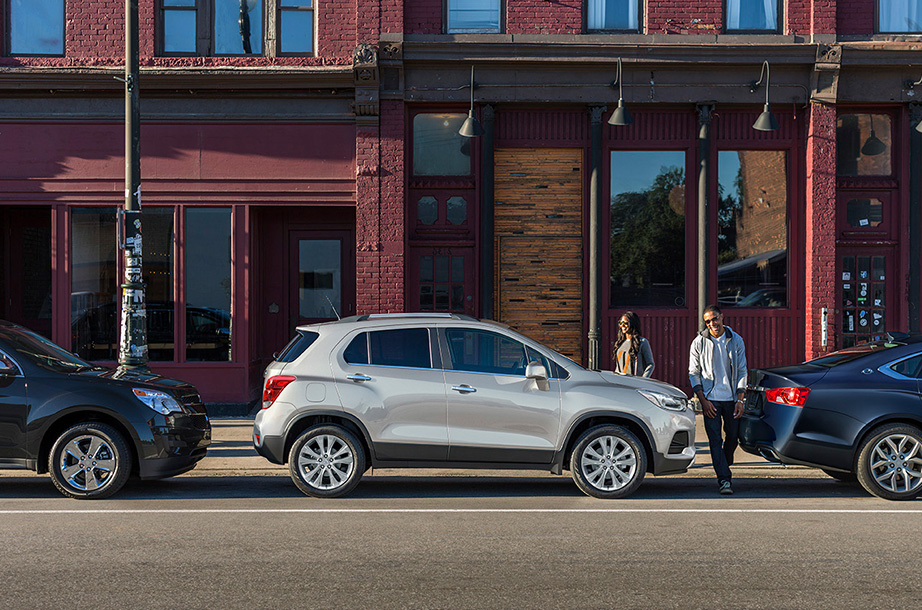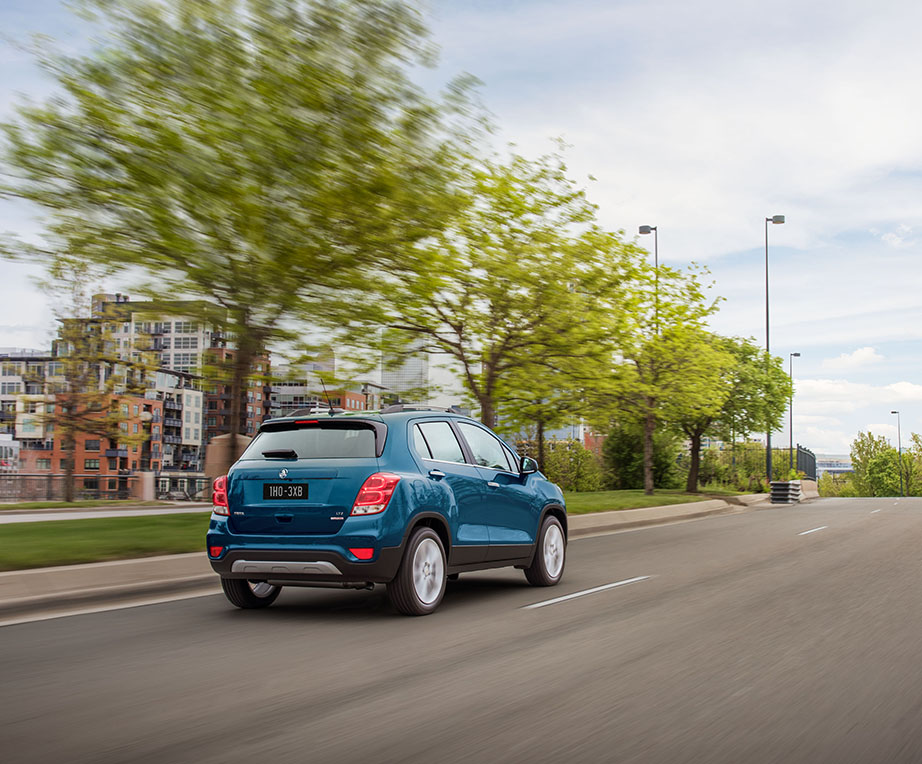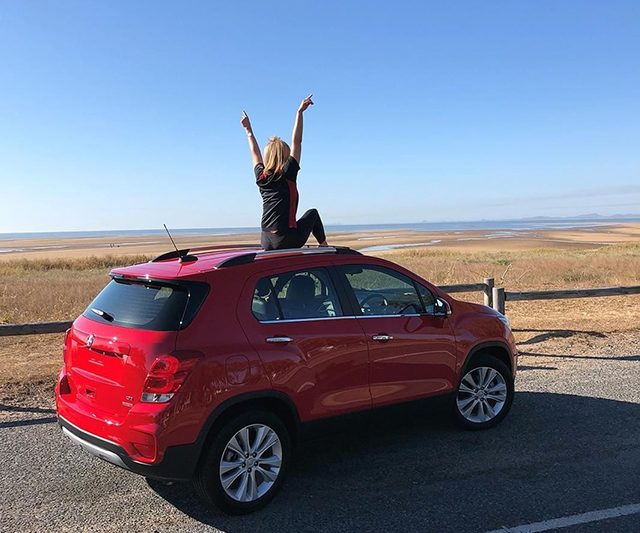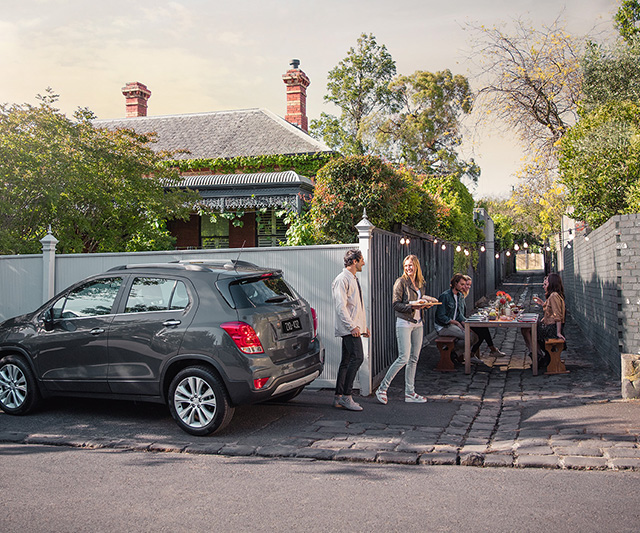Whether you’re looking to purchase your first car or shopping for a new update to replace your current vehicle, dealer speak (i.e. confusing technical terms for car features) can make the process feel overwhelming.
Don’t let your lack of vehicle know-how affect your choice in car and find the perfect model to suit your lifestyle with this easy-to-understand guide to confusing car terms.
ABS
ABS, or Anti-lock Braking System, will help you to stop quicker in an emergency by stopping the brakes from locking up, which can cause the car to slide.
Boot size
Rear cargo spaces are usually measured in litres—but when you’re just looking at a number how do you know what is big and what is small?
As a guide, a micro hatchback is usually around 155-250-litres; a small car is usually around 414-litres and a mid-sized SUV can be anything from 400-630-litres. A model like the Holden Trax, a small city-friendly SUV, sits in the middle at around 365-litres (or a huge 785-litres with the rear seats folded).

ABS will help you to stop quicker in an emergency.
(Credit: Supplied)Cruise control
Cruise control allows you to set the speed on long stretches of road, without using your foot. It not only makes road trips more comfortable but also helps prevent you from accidentally speeding.
DAB+ radio
DAB+ (Digital Audio Broadcast) or ‘digital radio’ is a pumped-up version of AM/FM radio that has additional channels, many of which are very genre-specific, and provides better sound quality.
ESC
Electronic Stability Control (ESC) stops you from skidding off the road by individually braking wheels to help turn the car and keep it going where the driver wants it to go.
Front-wheel drive
Front-wheel drive (FWD) means that all of the engine power is sent to the front wheels, while the rear wheels simply follow their lead (unlike rear-wheel drive, which is the opposite). Front-wheel drive cars often have better fuel economy than their RWD and 4WD cousins.
Gradient descent control
Also known as a Descent Control System (DCS), gradient descent control is found on most rough and tumble 4WDs (like the Holden Colorado). It uses technology also found in the ESC to maintain a controlled speed when travelling down a steep hill.
Hill start assist
Hill Start Assist (HSA) can detect when you’re stopped on a hill and will intervene to stop the car from accidentally rolling backwards.
ISOFIX
A godsend for new parents, ISOFIX is the newest and easiest way to install a child seat. Unlike the old way that involved tricky tethers and seatbelts, ISOFIX has anchor points that are already built into the car.
Jumper cables
Thick electric cables that have clips at either end that can be used to start (or ‘jump-start’) a vehicle with a dead battery by connecting it to the working battery of another vehicle.
Keyless entry
With keyless entry (or passive entry), there’s no fumbling around for the key. As long as it’s on your person, the car will sense your approach and unlock like magic.

Bad with keeping track of your keys? Keyless entry is your answer.
(Credit: Supplied)LED daytime running lights (DRLs)
A safety feature that allows the car to be more visible on the road at all times. These low-powered headlights will glow anytime the car is on, as seen on the new Holden Trax.
MVP
A Multi Purpose Vehicle (MVP) is a multi-passenger vehicle with maximised interior space, often used by families. In the market for one? Try Holden.
Newton metres (nM)
A newton metre is a measurement of torque. What is torque? It’s the force that gets the engine rotating and pushes it to move. Think of torque as the muscle and power (measured in Kilowatts) as the energy.
Optional accessories
You’d be forgiven for thinking Apple CarPlay, Android Auto and reverse cameras and sensors are optional extras, but they actually come standard on the Holden Trax. When it comes to adding extras to a vehicle, ask the manufacturers what available accessories they can offer to make the car unique and perfectly suited to you. Just be mindful that fitting extra accessories can potentially affect your car’s warranty and resale value.
Park assist
Using cameras or radars (or both in the case of some models), park assist usually senses and alerts you to the car’s surrounding’s, ensuring you don’t hit anything while parking.
Questioning serving costs
When buying a new car, this is one of the most asked questions and hard to figure out in the long run. Some manufacturers, like Holden, have realised this and offer customers capped price servicing that allows owners to see how much the maximum price of a scheduled service for their vehicle will be.
Ride height
The distance between the lowest point of a vehicle and level ground. If a car has a high ride height, it can mean better vision around the car, especially in traffic—one of the reasons many Australians prefer SUVs.
Smartphone pairing
Usually refers to Apple CarPlay or Android Auto that links devices to your entertainment system, enabling smartphone functions such as maps, music, phone calls and texts to come-through LCD screens and speakers.
Touch screen
The main part of the car’s infotainment that controls entertainment, apps, navigation and sometimes climate and other customisable features.
USB
While we all know what a Universal Serial Bus (USB) port is, many people may be surprised to learn of it being a common feature within modern cars. Car USB inputs allows for the charging of devices, and can be used as a plug-and-play solution.
VIN
The Vehicle Identification Number, or “VIN”, is a unique code given to your car by its manufacturer. It is often located in the car’s front doors or in front of the engine under the bonnet. You can also find it on your registration ticket.
Wheel sizes
On the side of your tyre will be a stamp of numbers. The big number (for example 205/55 R 16 V) means this (from L-R): Tyre width, tyre profile, R (for radial) wheel diameter, speed rating). Some tyres also have a load index which is written just before the speed rating.

What do you need from your car? From tyre talk to touch-screens, knowing what you want in your car is a priority.
(Credit: Supplied)X factor
When buying a new car, the easiest way to rule out a heap of options straight away is by deciding which style of car you like the look of. Ask yourself: does this car have an X factor — a special quality? If you think it does (remember X factor is subjective) then consider a test drive. Which brings u to…
Y not?
The question you should always ask yourself when it comes to test driving a car. There is no better way to get to know how something performs on the road!
Zippy
A buzzword that expresses a car’s city-to-country appeal, meaning it can dart traffic with ease, do the school run or hit the open road. Usually, a ‘zippy’ car is that Goldilocks size of not-too-big, not-too-small, but just right.
Get to know the finer details of the Holden Trax.
Brought to you by Holden Trax


